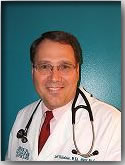articles
Physician Assistant and Nurse Practitioner Malpractice Trends
As originally published by Medical Care research and Review, 2016.
By: Dr. Jeffrey Nicholson, et. al.
Tel: 414-517-6915
Email Dr. Nicholosn
View Profile on Experts.com.
Abstract
Trends in malpractice awards and adverse actions (e.g., revocation of provider license) following an act or omission constituting medical error or negligence were examined. The National Practitioner Data Bank was used to compare rates of malpractice reports and adverse actions for physicians, physician assistants (PAs), and nurse practitioners (NPs). During 2005 through 2014, there ranged from 11.2 to 19.0 malpractice payment reports per 1,000 physicians, 1.4 to 2.4 per 1,000 PAs, and 1.1 to 1.4 per 1,000 NPs. Physician median payments ranged from 1.3 to 2.3 times higher than PAs or NPs. Diagnosis-related malpractice allegations varied by provider type, with physicians having significantly fewer reports (31.9%) than PAs (52.8%) or NPs (40.6%) over the observation period. Trends in malpractice payment reports may reflect policy enactments to decrease liability.
Introduction
American physician assistant (PA) and nurse practitioner (NP) education programs were established in 1965 as a response to emerging health care needs (Cawley Cawthon, & Hooker, 2012; Ford, 1982; Starr, 1982). NPs and PAs represent approximately one fifth of the American health workforce holding an active state license to provide care and prescribe medications (Hooker, Brock, & Cook, 2016; U.S. Department of Health & Human Services, Health Resources and Services Administration, National Center for Health Workforce Analysis, 2013). PAs and NPs practice in all U.S. states and federal jurisdictions in both primary care and specialty medicine, are employed in nearly every domain of medicine, and provide care for medically underserved and vulnerable populations (Benitez, Coplan, Dehn, & Hooker, 2015; Hooker, Benitez, Coplan, & Dehn, 2013). The expanded presence of PAs and NPs coincides with concerns of physician shortages (Petterson, Liaw, Tran, & Bazemore, 2015; Sargen, Hooker, & Cooper, 2011). Increasing demand and broadening PA and NP integration into practice has raised some questions regarding the impact these providers may have on the quality of care (Coldiron & Ratnarathorn, 2014; Moses & Jones, 2011).
PA and NP scope of practice regulations and expectations of collaboration with physicians vary by state. PAs must practice under the supervision of a physician, while in many states, NPs may practice with autonomy. Despite these differences, comparison of physician, PA, and NP liability risk, and resulting malpractice and disciplinary actions, provides one indicator of the quality of care (Brock, 1998; Cawley, Rohrs, & Hooker, 1998; Ledges, Victoroff, & Ginde, 2011). Prior studies concluded that the liability risk of a PA or NP was less than that of a physician in terms of malpractice payments or number of citations. These studies drew on the early development of the National Practitioner Data Bank (NPDB). The NPDB collects and releases information related to professional competence including malpractice payments and adverse actions taken with health care providers. Since the inception of the NPDB in 1990, a great deal of data has been accumulated and, with more variables available, the information has become increasingly detailed.
Hooker, Nicholson, and Le (2009) compared PA, NP, and physician malpractice reports and disciplinary actions reported during the first 17 years (1991-2007) of the NPDB. The analysis supported earlier studies in which PAs and NPs were found to have, proportionally, fewer reported malpractice payments and adverse actions per provider than physicians (Cawley et al., 1998). Since that report, the number of PAs and NPs, their distribution across specialty practice, and legislated scope of practice have expanded markedly (Gadbois, Miller, Tyler, & Intrator, 2015). The increasing presence of PAs and NPs, holding broader responsibilities for ensuring the delivery of high-quality health care, suggests the importance of periodically revisiting of the NPDB to examine reports of clinician liability.
New Contributions
This work examines trends and the nature of medical errors underlying NPDB reported malpractice claims and adverse actions reported from 2005 to 2014, extending and expanding on the earlier work of Hooker et al. (2009). Using the NPDB records, we explore trends of provider malpractice and adverse actions, size of malpractice awards, Downloaded from mcr.sagepub.com at Bobst Library, New York University on July 30, 2016and the time lapse between an act or omission and the reporting, or judgment, regarding the event. Ten-year trends for risk ratios are provided for physician to PA, physician to NP, and PA to NP malpractice and adverse action records.
Method
Jeffrey G. Nicholson, PA-C, PhD, MEd, MPAS, is a nationally recognized leader in the PA profession and authority on the standard of care and other legal aspects of PA clinical practice. He has been an actively practicing PA for 17 years and has been in PA academia for over 12 years serving as Assistant Professor, Director of Clinical Education and PA Program Director, most recently at the University of Wisconsin-Madison. He is a distinguished fellow of the American Academy of Physician Assistants, President of the American Academy of PAs in Legal Medicine and a board member of the Wisconsin Academy of Physician Assistants. He has completed degrees at Boston College, Harvard University and the University of Wisconsin. He has published articles on PA education, PA malpractice, and PA employment. He leads a consulting firm to support the work of attorneys and insurance companies providing case merit review and expert testimony on the standard of care of physician assistants and nurse practitioners in all medical specialties.
©Copyright - All Rights Reserved
DO NOT REPRODUCE WITHOUT WRITTEN PERMISSION BY AUTHOR.


